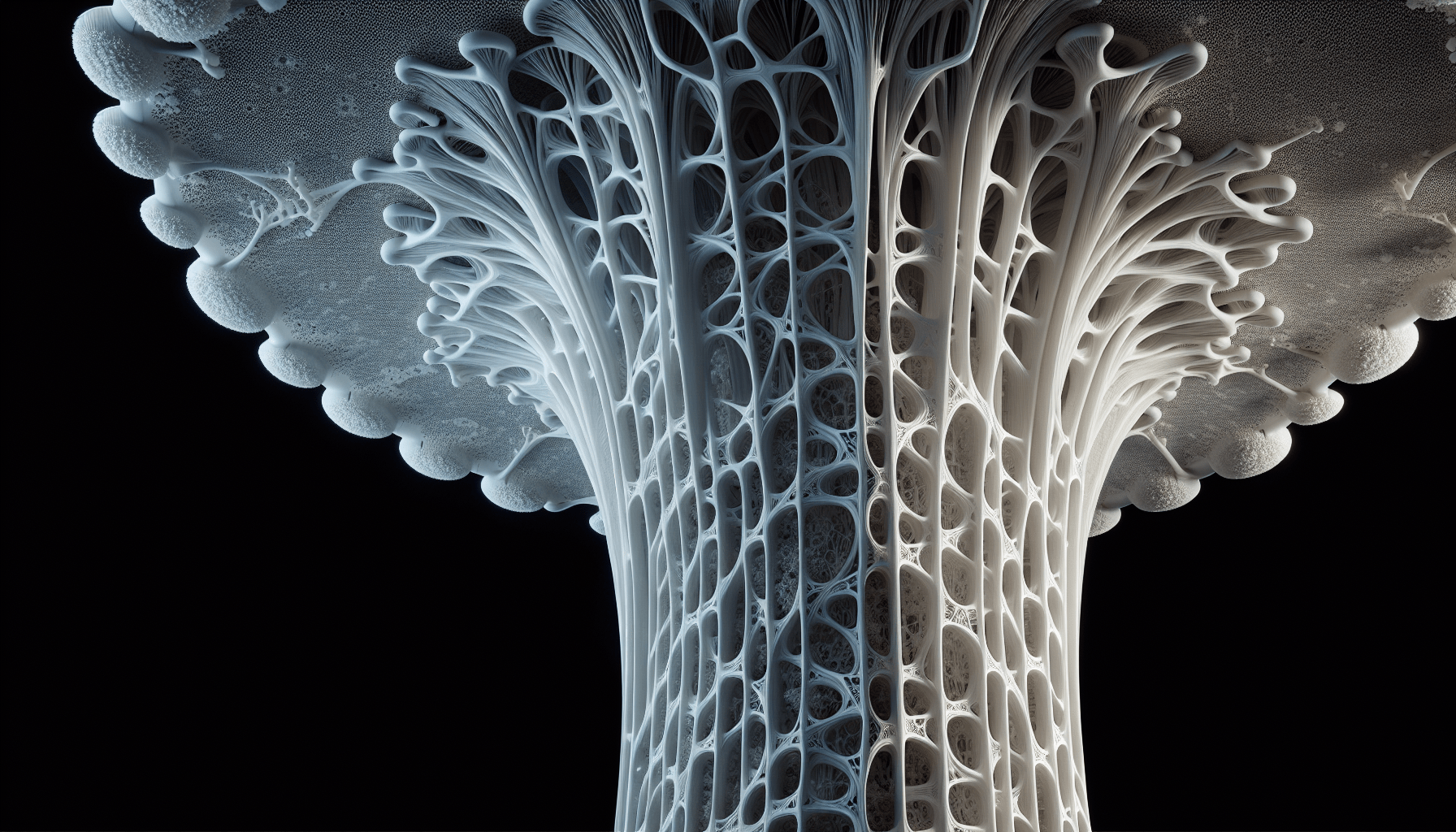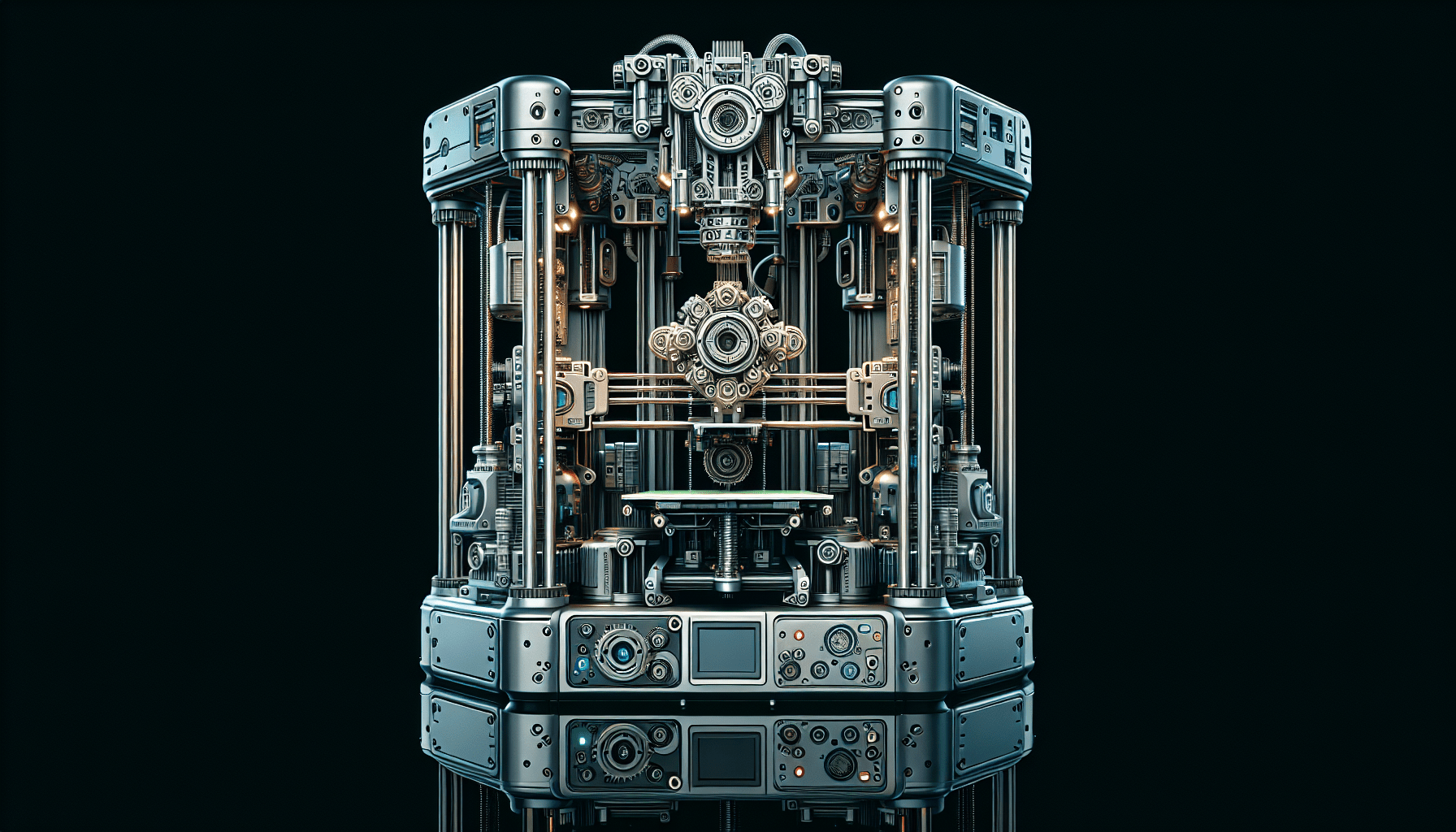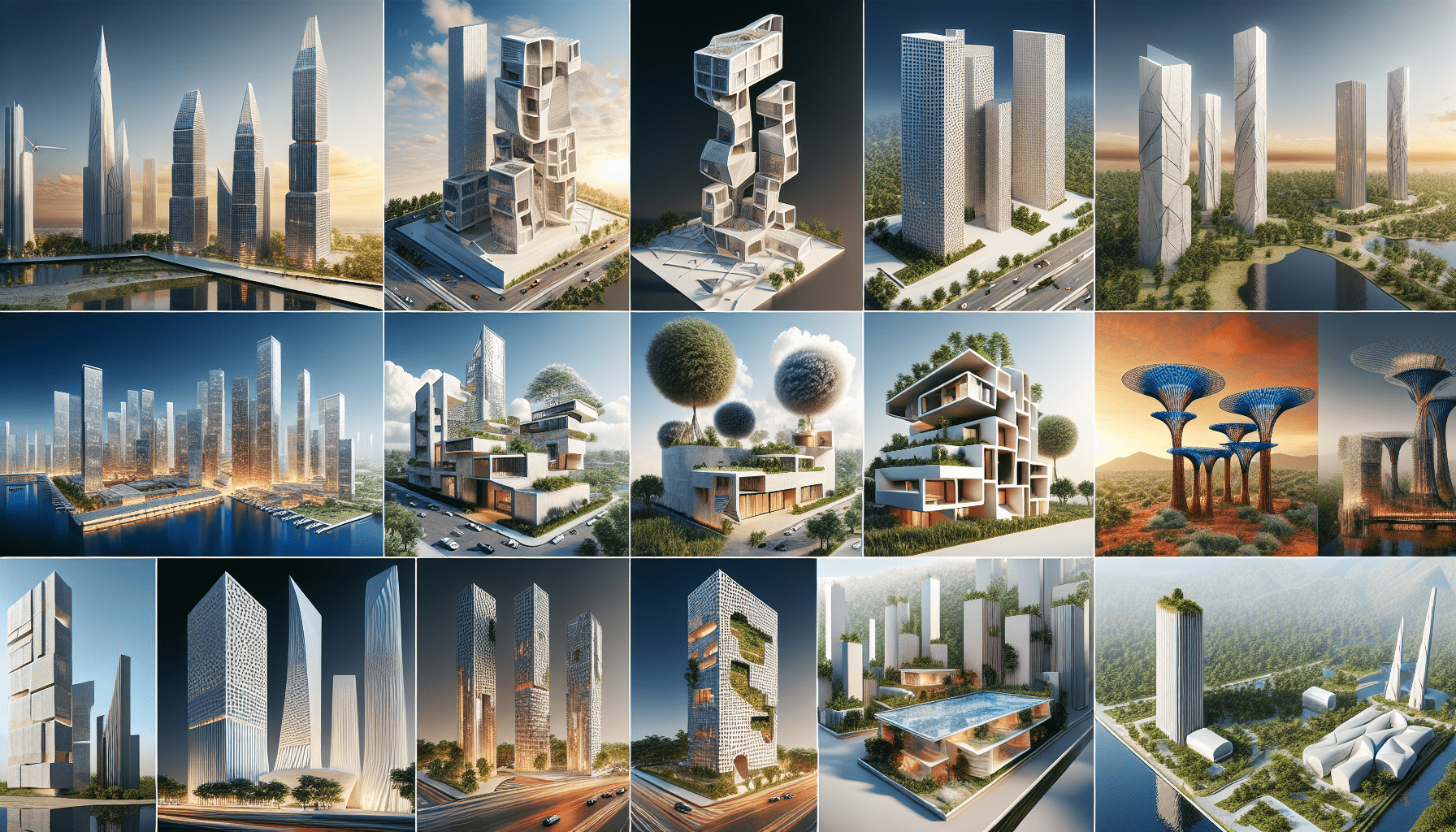Bambu Lab A1 Combo, A1 3D Printer and AMS lite, Support Multi-Color 3D Printing, High Speed & Precision, Full-Auto Calibration & Active Flow Rate Compensation, ≤48 dB Quiet FDM 3D Printers
(as of June 19, 2025 23:45 GMT +00:00 - More infoProduct prices and availability are accurate as of the date/time indicated and are subject to change. Any price and availability information displayed on [relevant Amazon Site(s), as applicable] at the time of purchase will apply to the purchase of this product.)The article discusses a groundbreaking architectural project by Blast Studio in London, which involves the 3D printing of a column using living mycelium. This innovative approach not only creates a unique structure reminiscent of a tree trunk but also serves a dual purpose: after the mycelium has been harvested for mushrooms, it becomes a structural element within the building. The column’s design is algorithmically optimized to provide optimal growing conditions for the mycelium while enhancing its structural capacity. By utilizing waste coffee cups as a feedstock and incorporating natural pigments, the process demonstrates the potential for sustainable and self-sufficient architecture that could revolutionize the construction industry. Blast Studio aims to scale up this technology to print entire buildings, creating a living architecture that can self-repair and provide food for inhabitants.
The Tree Column – Architecture That Could Feed People

Overview of the 3D-printed mycelium Tree Column by Blast Studio
In a groundbreaking development in the field of architecture, London-based firm Blast Studio has created a method for 3D printing with living mycelium. This innovative approach has been used to construct the Tree Column, a two-meter-high structure that serves both as a source of food and as a structural building element. The column’s design is inspired by the ridged and undulating structure of a tree trunk, and it has been optimized to provide ideal growing conditions for mycelium, which is the root system of fungi.
The column’s structure and design
The Tree Column features a unique ridged and undulating structure that mimics the natural form of a tree trunk. This design is not only aesthetically pleasing but also serves a functional purpose. The column’s shape is algorithmically designed to enhance its structural capacity while providing optimal growing conditions for mycelium. The folds and crevices in the structure create microclimate pockets that trap moisture, simulating the conditions found in the natural undergrowth where mycelium thrives.
$30 off $400+ Anycubic Products with code AC30OFF
The use of mycelium and its growing conditions
Mycelium, the root system of fungi, is the main component of the Tree Column’s construction. By harnessing the growing potential of mycelium, Blast Studio has created a column that can support the growth of mushrooms while also serving as a load-bearing architectural element. To create ideal growing conditions for mycelium, the column’s design was inspired by natural undergrowth, where mycelium tends to flourish. The column provides a humid environment away from airflow, creating the perfect conditions for mycelium to thrive.
The production process of the Tree Column
The production process of the Tree Column involves mixing mycelium with waste coffee cups, which serve as a feedstock. The coffee cups are shredded and boiled to produce a sterilized paper pulp. This pulp is then mixed with mycelium and natural pigments for color. The resulting biomass paste is pushed through a custom-made cold extruder, similar to those used for 3D printing with clay. Layer by layer, the mycelium-infused paste is 3D printed into the desired shape of the column. Once printed, the mycelium consumes the coffee cup pulp and grows to encompass the entire structure. The mycelium is then dried to create a solid and load-bearing architectural element.

Properties and advantages of mycelium as a building material
Mycelium has several remarkable properties that make it an ideal building material. Firstly, it is highly insulating, providing effective thermal insulation for the structure. Additionally, mycelium has natural fire-retardant properties, making it a safe material for construction. In terms of its structural capacity, mycelium has been found to have similar properties to medium-density fiberboard (MDF), a commonly used material in the construction industry. This makes mycelium a viable substitute for traditional building materials such as concrete, especially in small constructions like houses and small buildings.
Recycling and self-repairing capabilities of the Tree Column
One of the most significant advantages of the Tree Column is its recyclability. If a column is damaged or no longer needed, it can be recycled and reprinted to form a new architectural element. This ensures that the material can be reused, reducing waste and environmental impact. Additionally, Blast Studio is exploring the possibility of creating a self-repairing version of the column. By drying the mycelium to a specific point, the growth of the organism can be halted without killing it. This would allow the mycelium to re-grow over any cracks or damage, effectively repairing the structure.
Display and future plans of Blast Studio
The Tree Column is currently on display at the Design Museum in London as part of the Waste Age exhibition. This exhibition showcases innovative approaches to sustainable design and architecture. Blast Studio has plans to use the Tree Column as the first building block for the Tree Pavilion, a larger-scale architectural project. The studio aims to demonstrate the potential of their technology to construct entire buildings, with the vision of creating living architecture that can self-repair and produce food for its inhabitants.
Other architects and designers using mycelium in architecture
Blast Studio is not the only firm exploring the potential of mycelium in architecture. Several architects and designers have also embraced this sustainable and versatile material. Dirk Hebel, a renowned architect, has created experimental pavilions using mycelium instead of traditional structural materials like concrete and steel. The Living, a New York-based studio, has also developed innovative mycelium-based structures. These examples highlight the growing interest in mycelium as a sustainable and environmentally friendly alternative in the field of architecture.
In conclusion, Blast Studio’s 3D-printed mycelium Tree Column represents a significant advancement in the field of sustainable architecture. The column’s unique design, optimized growing conditions, and use of mycelium as a building material make it a groundbreaking innovation. With its recyclable and self-repairing capabilities, the Tree Column showcases the potential for creating sustainable and regenerative architecture. As other architects and designers join the movement, mycelium is emerging as a viable alternative to traditional building materials, offering a sustainable and environmentally friendly solution for the future of architecture.
Buy Photon Mono M5 Get Free 1KG Resin








